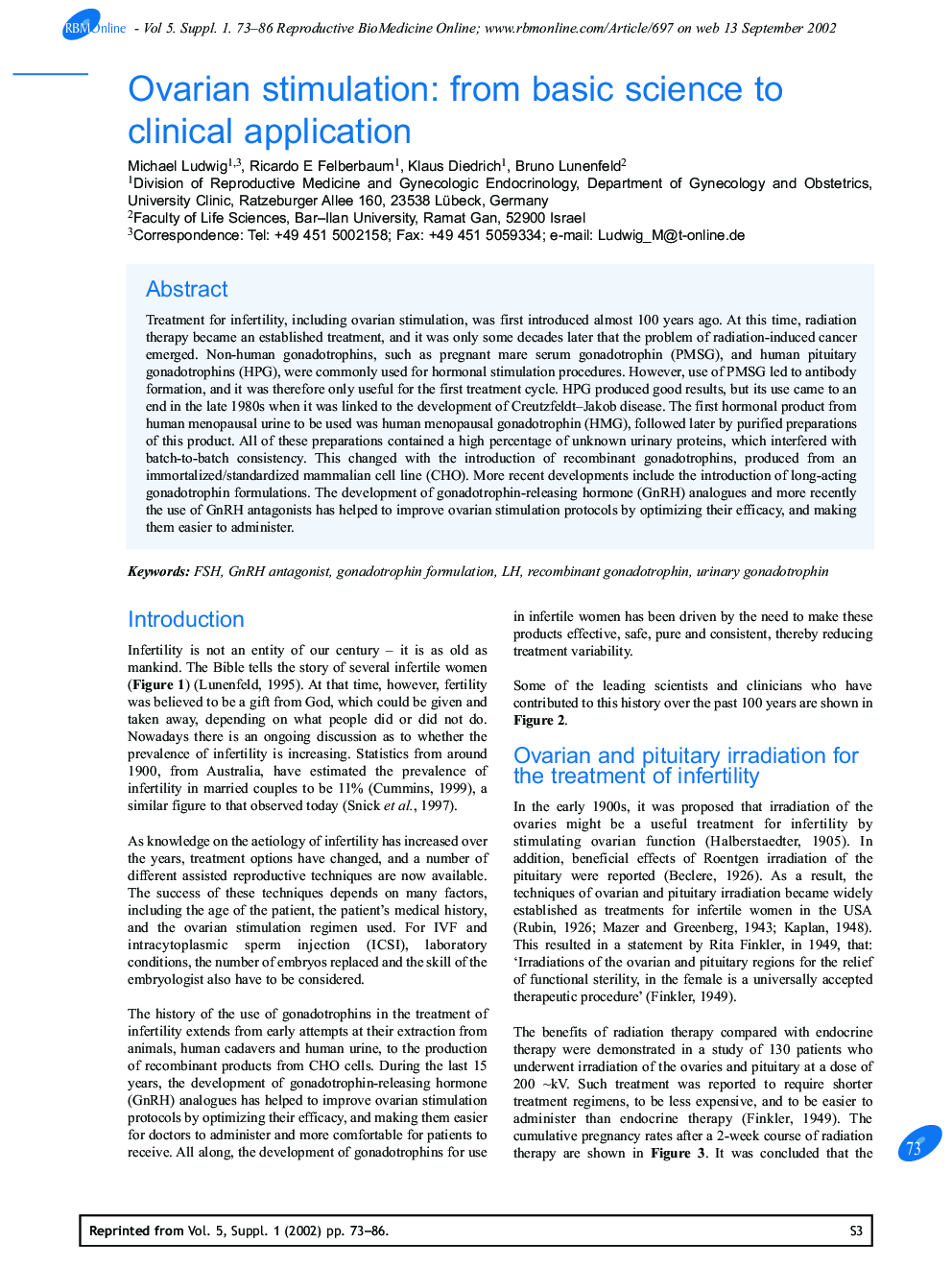| Article ID | Journal | Published Year | Pages | File Type |
|---|---|---|---|---|
| 3971933 | Reproductive BioMedicine Online | 2011 | 14 Pages |
Treatment for infertility, including ovarian stimulation, was first introduced almost 100 years ago. At this time, radiation therapy became an established treatment, and it was only some decades later that the problem of radiation-induced cancer emerged. Non-human gonadotrophins, such as pregnant mare serum gonadotrophin (PMSG), and human pituitary gonadotrophins (HPG), were commonly used for hormonal stimulation procedures. However, use of PMSG led to antibody formation, and it was therefore only useful for the first treatment cycle. HPG produced good results, but its use came to an end in the late 1980s when it was linked to the development of Creutzfeldt-Jakob disease. The first hormonal product from human menopausal urine to be used was human menopausal gonadotrophin (HMG), followed later by purified preparations of this product. All of these preparations contained a high percentage of unknown urinary proteins, which interfered with batch-to-batch consistency. This changed with the introduction of recombinant gonadotrophins, produced from an immortalized/standardized mammalian cell line (CHO). More recent developments include the introduction of long-acting gonadotrophin formulations. The development of gonadotrophin-releasing hormone (GnRH) analogues and more recently the use of GnRH antagonists has helped to improve ovarian stimulation protocols by optimizing their efficacy, and making them easier to administer.
